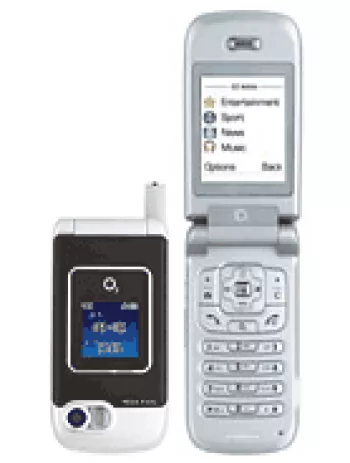
Introduction to O2 XDA Argon
The O2 XDA Argon is a device that marks a significant stage in the evolution of handheld technology. Released in 2007, it was part of the XDA series which combined PDA and mobile phone features in one device, catering to professionals and tech enthusiasts. The Argon model, with its array of functionalities, provided early solutions to connectivity and mobile computing at a time when smartphones were beginning to emerge as powerful tools for communication and productivity.
Design and Build Quality
The O2 XDA Argon showcases a design that reflects the technological trends of the late 2000s. With dimensions of 130 x 70 x 18.8 mm and a weight of 200 grams, it is relatively large and heavy compared to today's standard smartphones. Its design includes a solid and robust build, with a body that could withstand daily use. Despite the bulk, its silver finish and rounded edges gave it a modern aesthetic appeal at the time.
Display
The Argon features a 3.5-inch TFT resistive touchscreen with a resolution of 240 x 320 pixels. This screen size, while modest by today's standards, was fairly standard during its release period. The screen supports 65K colors, which was adequate for basic multimedia tasks and provided users with the ability to interact with applications and input data via stylus.
Operating System and Performance
Running on Microsoft Windows Mobile 5.0 PocketPC, the O2 XDA Argon was equipped with a 32-bit Samsung SC3 2442 processor clocked at 400 MHz. This combination of operating system and processor was aimed at providing a smooth experience for productivity applications, internet browsing, and basic multimedia. The device offered multitasking capabilities, allowing professionals to manage emails, calendar events, and office documents efficiently on the go.
Memory and Storage
The device was equipped with 128MB of RAM and 256MB of internal ROM. For its time, this was considered sufficient to support the installed applications and operating system. Additionally, the presence of an SD card slot allowed users to expand storage capabilities, facilitating the need to store larger amounts of data, including documents and media files.
Camera Features
Featuring a single 2 MP rear camera, the Argon was designed more for documentation and basic photography than high-quality imaging. It supported video recording capabilities, albeit at a quality that reflects the technological limitations of the time. The camera was functional enough to capture stills and occasional video footage when necessary.
Connectivity Options
The device supported GSM technology, with 2G bands of GSM 900 / 1800 / 1900. For internet connectivity, the Argon provided GPRS Class 10 technology but did not support EDGE. The device also included Wi-Fi 802.11b/g for local wireless connectivity, as well as Bluetooth 2.0 and an infrared port for short-range data exchange. Notably, it lacked GPS positioning and FM radio features, common in many of its contemporaries.
Battery Life
Powered by a removable Li-Ion 1300 mAh battery, the O2 XDA Argon offered modest battery performance, typical for the era. It promised up to 200 hours on standby and a talk time of up to 4 hours per charge. The removable battery feature was practical, allowing users to carry spare batteries for extended usage without access to charging facilities.
Sound and Multimedia
In terms of sound, the device included a loudspeaker with the ability to download polyphonic and MP3 ringtones, but it did not feature a 3.5mm audio jack, relying instead on proprietary or USB-connected audio solutions. This could be seen as a limitation for users who preferred using standard headphones or audio devices.
Conclusion
The O2 XDA Argon stands as a testament to the early days of smartphone development, merging PDA functionality with mobile telecommunication features. For its time, it provided a comprehensive set of tools for productivity and communication, albeit within the technological constraints of the era. By today's standards, its features may seem basic or outdated, but it remains a significant milestone in the journey towards modern smartphones.
Key Features of O2 XDA Argon
- Compact size with dimensions of 130 x 70 x 18.8 mm
- 3.5-inch TFT resistive touchscreen with 65K colors
- Operates on Microsoft Windows Mobile 5.0 PocketPC
- Powered by a 400 MHz Samsung SC3 2442 CPU
- Wi-Fi 802.11b/g capability for wireless connectivity
- Includes Bluetooth 2.0 and Infrared port
- 2 MP main camera with video recording capability
- Expandable storage through SD card slot
- Removable Li-Ion 1300 mAh battery with up to 200 hours standby time
Disadvantages of O2 XDA Argon
- Uses outdated technology with GSM only, lacking 3G or 4G support.
- No EDGE support, limiting mobile data speed.
- Heavy and bulky design with a weight of 200g.
- Low screen-to-body ratio (~41.7%) and low pixel density (~114 ppi).
- Runs on an outdated operating system (Microsoft Windows Mobile 5.0 PocketPC).
- Limited internal memory of 128MB RAM, 256MB ROM.
- Basic 2 MP rear camera with no front-facing/selfie camera.
- Lacks a 3.5mm headphone jack.
- No GPS positioning available.
- No support for FM radio.
- Short battery life with only up to 4 hours of talk time.
View Also
More Phones
All Rights Reserved +13665 Phones © Mobilawy 2025
























